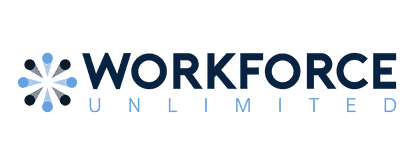I-9 & E-Verify Compliance for Employers | Avoid Hiring Risks & Fines
Hiring at scale? Here’s how to protect your business while staying audit-ready.
In high-risk, high-volume industries, one compliance misstep can throw everything off course.
We’re talking about the kinds of slip-ups that stall contracts, raise red flags during audits, and cost more than fines—they cost trust. Between shifting I-9 compliance rules, tighter E-Verify requirements, and a maze of state-specific hiring laws, even experienced teams can get tripped up.
This guide is here to help. We’ll break down where the biggest workforce compliance risks show up, what to watch for during seasonal or high-volume hiring, and how to stay audit-ready without slowing down your momentum.
Because doing things the right way, from day one, isn’t just smart. It’s the Workforce Way.
Compliance Risks in Staffing Are Real. So Are the Consequences.
Here’s the hard truth: even small compliance missteps can lead to major business setbacks.
According to legal audits, 76% of paper I-9s contain at least one error. The fines? Anywhere from $281 to more than $28,000 per violation. And that’s just the financial side. Reputational damage? Harder to track. Even harder to fix.
Most issues boil down to a few common (and avoidable!) mistakes:
- Incomplete or late I-9 forms
- E-Verify submissions outside the required timeline
- Missing documentation or misalignment with state-specific hiring laws
These errors don’t only trigger penalties. They create operational chaos, erode client trust, and jeopardize contracts, especially for companies in highly regulated industries.
Who’s Most at Risk?
Some sectors carry more compliance pressure than others—when hiring ramps up and timelines shrink, the margin for error disappears:
- Distribution centers and warehouses rely heavily on temp labor, making them a frequent audit target.
- Contact centers see turnover rates of 30–45%, which makes it easy to miss onboarding deadlines.
- Food production has complex labor regulations and documentation standards that vary by state and facility type.
And if you’re scaling fast or staffing seasonally, you’re in the high-alert category.
Why High-Volume Hiring Makes It Harder
Hiring at scale introduces a whole new layer of complexity—and risk. In fast-moving environments like distribution, logistics, or seasonal fulfillment, compliance becomes harder to manage and easier to overlook. Not because teams aren’t trying, but because the systems in place weren’t built for this kind of speed or volume.
Here’s where breakdowns tend to happen:
- Compressed hiring timelines. When teams are under pressure to fill dozens (or hundreds) of roles in days, compliance checks can fall to the bottom of the list. Especially when paperwork like I-9s or E-Verify submissions are still handled manually or inconsistently.
- Dispersed or decentralized worksites. If you’re staffing across multiple locations or using different teams or partners to do it, keeping processes aligned gets exponentially harder. Without clear SOPs, one facility may be following all the rules while another is unintentionally out of bounds.
- Temporary and seasonal labor surges. These workers often come in waves, and when onboarding is rushed, it’s easy to miss eligibility documentation, classification nuances, or state-specific employment laws.
- Incomplete audit trails. Even when compliance steps are taken, failure to document when and how they occurred can create exposure during an audit. Regulators don’t only want to know it got done; they want proof it was done right.
- Inconsistent internal training. Frontline hiring managers may not have full visibility into evolving requirements. If they haven’t been trained on the latest state laws or federal requirements, their team’s compliance risk rises by default.
One missed I-9. One late E-Verify check. One temp with the wrong classification. That’s all it takes to trigger fines, lose a contract, or stall a production line you can’t afford to slow down.
Compliance doesn’t live in a binder or an audit trail. It shows up when you’re onboarding 40 people before Friday, and the paperwork has to be right. It’s the system that keeps your team moving when everything else is urgent.
How to Stay Ahead and Compliant
There’s no such thing as “we’ll fix it later” when it comes to workforce compliance. If you’re hiring at pace, you need a process that holds up on your busiest days and in front of an auditor.
Here’s what teams that don’t panic during audits have in common:
- They lock in the I-9 process. No guesswork. No one-off forms. A clear, repeatable system helps prevent mistakes and makes internal audits a whole lot easier.
- E-Verify happens on autopilot. If your process relies on a Word doc or someone’s memory, it’s not a process. Automate it or expect errors.
- Managers know the rules. Regulations change. Expectations shift. When your frontline hiring teams understand the rules, you reduce risk across the board.
- They document like their contracts depend on it. Because they do. If you can’t prove it, it didn’t happen.
Compliance is never about perfection. It’s about building a system that does the heavy lifting before things go sideways, and letting your team focus on the work, not the what-ifs.
I-9 and E-Verify: What You Need to Know Now
E-Verify is federally available, but state-mandated.
Currently, 23 states require E-Verify for at least some employers, like those doing business with the government. If you’re hiring in any of these places, it’s not a nice-to-have. It’s the law.
Mandatory E-Verify States (as of 2025):
- Alabama
- Arizona
- Florida
- Georgia
- Idaho
- Indiana
- Louisiana
- Michigan
- Minnesota
- Mississippi
- Missouri
- Nebraska
- North Carolina
- Oklahoma
- Pennsylvania
- South Carolina
- Tennessee
- Texas
- Utah
- Virginia
- West Virginia
A few more states don’t mandate it outright, but still strongly recommend it, or require it for specific sectors or contracts.
Hiring across state lines? Your best bet is to treat E-Verify like a universal requirement and build it into your standard onboarding workflow. That way, your team isn’t guessing. And you’re not cleaning up compliance messes later.
The I-9 timeline isn’t flexible.
Every new hire needs a completed I-9 within three business days. That includes seasonal workers and temp labor. Miss the window, and it’s a compliance violation.
Consistency counts.
Your process needs to work the same whether you’re hiring five people or fifty. When some locations follow the rules and others don’t, you’re exposed. The more sites, the more partners, the more important it is to align.
Auditors care about the paper trail.
It’s not enough to do it—you need to prove it. That means dates, confirmations, and documentation that shows what happened, when, and by whom.
Frequently Asked (But Not Always Answered) Questions
Do employers need E-Verify for temporary labor?
If you’re in a mandated state, yes, regardless of how long the worker stays. If you’re not, it’s still best practice to use it for all hires, including temps.
What’s the I-9 deadline for seasonal workers?
Same as everyone else: three business days from the start date. Doesn’t matter if they’re here for three days or three months.
Can a staffing agency manage compliance for me?
They can. But the key word is manage, not own. You’re still responsible for what happens under your company name. Make sure your agency’s process is airtight (and audit-ready).
Compliance Checklist for Seasonal Hiring
Seasonal surges don’t leave room for guesswork. If you’re onboarding fast, your compliance plan needs to keep up.
Use this checklist to keep things legal and stress-free.
Know the classification rules.
Are they W-2 or 1099? Exempt or non-exempt? Misclassification is one of the fastest ways to end up on a regulator’s radar. When in doubt, consult legal counsel, especially if you’re using temporary or contract labor at scale.
Set expectations early.
Make it clear that the position is temporary and at-will. Don’t wait until offboarding to clarify what the role was (or wasn’t).
Complete I-9s on time.
Every hire. Every time. Within three business days. No exceptions even if the role is temporary, and especially if the volume is high.
Make E-Verify non-negotiable.
Whether or not your state requires it, standardizing E-Verify across your workforce closes a major compliance gap when speed is a factor.
Track hours and overtime with care.
It’s easy to lose sight of labor thresholds when your team is covering extended shifts. Stay ahead of wage and hour violations by keeping accurate records.
Follow state-specific youth labor laws.
If you’re hiring minors, make sure you have the right documentation and permits based on age, hours, and job type. States vary widely here.
Consider NDAs or confidentiality agreements.
Especially if your seasonal staff is exposed to customer data, proprietary systems, or sensitive business operations. It’s a simple step that can prevent costly leaks later.
Document everything.
Time of hire. Completed forms. Who signed what and when. When you’re moving fast, audit trails matter more than ever.
Turning Compliance Into a Business Advantage
Procurement teams notice the difference between vendors who scramble for documents and partners who already have them in place.
That matters when you’re competing for contracts with large buyers, government agencies, or enterprises that demand proof of compliance before the ink dries. They’re not just scanning your price. They’re assessing your risk profile.
Companies with proactive compliance systems don’t just avoid issues. They win faster, build better partnerships, and reduce the drag on internal legal and HR teams.
It’s not paperwork. It’s deal flow. And if you want to be first in line when the next opportunity hits, it pays to have your compliance house in order.
What to Expect from a Compliance Partner
Here’s what a true staffing partner brings to the table, particularly if you’re hiring at scale, across multiple states, or in industries where audits come with the territory:
Proactive audits
Good partners don’t wait for a regulator to show up. They build internal checks that catch issues before they snowball—keeping your hiring compliant, consistent, and calm under pressure.
Multi-state law fluency
From California’s evolving labor codes to the patchwork of E-Verify rules across the South, they know where laws differ and how to keep your hiring team aligned across locations.
Process documentation and audit trails
Every step tracked. Every box checked. If it comes time to prove you followed the rules, a good partner doesn’t dig through emails. They hand over the documentation—clean, complete, and ready to review.
Because compliance isn’t a back-office chore. It’s part of the service. And if your staffing firm can’t show you their process, that’s your red flag.
Don’t Wait for an Audit to Act
Every decision you make—every form, every hire, every policy—is a reflection of what your company stands for.
When you build compliance into your hiring process, you’re sending a message: We do the right thing, even when it’s hard. We show up prepared. We lead with integrity.
That kind of trust doesn’t come from shortcuts. It comes from systems that work under pressure, teams that understand the stakes, and partners who care as much about your reputation as you do.
The organizations that lead in moments of pressure are the ones that are prepared for them.
Want to see where your current process stands? We offer confidential compliance briefings to help companies reduce risk and build better systems—from the inside out. Schedule yours today.








